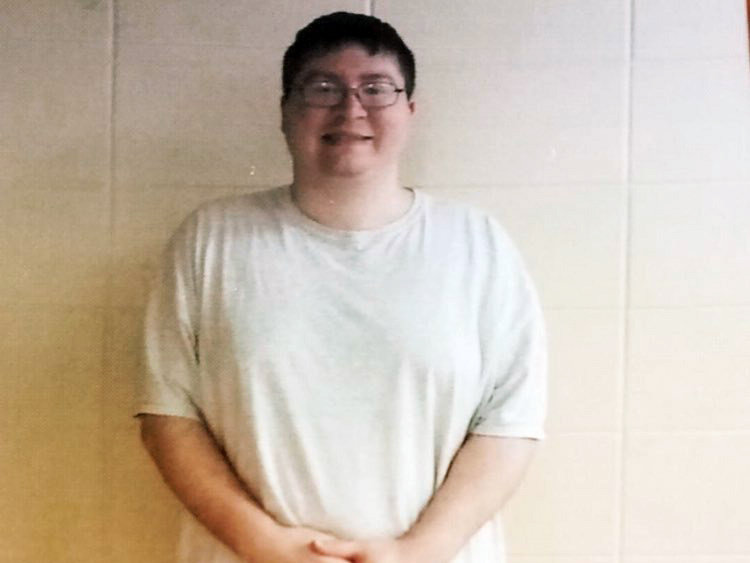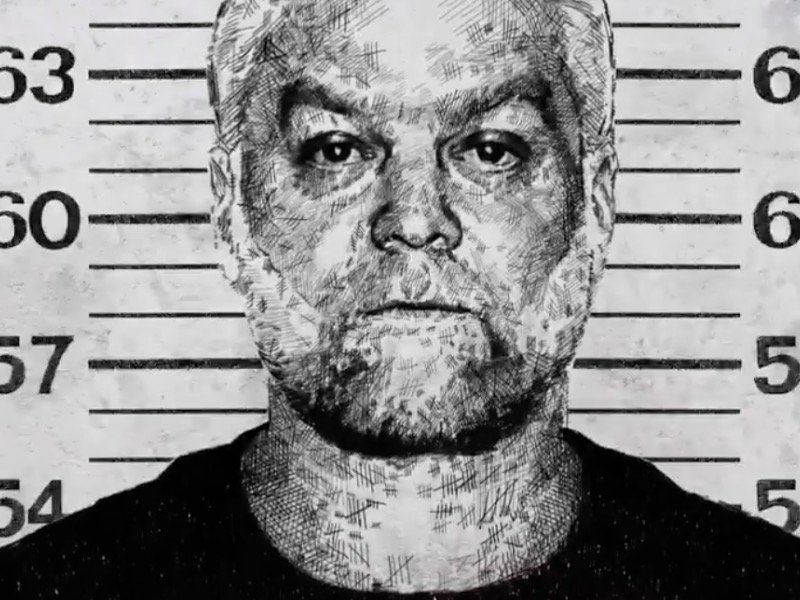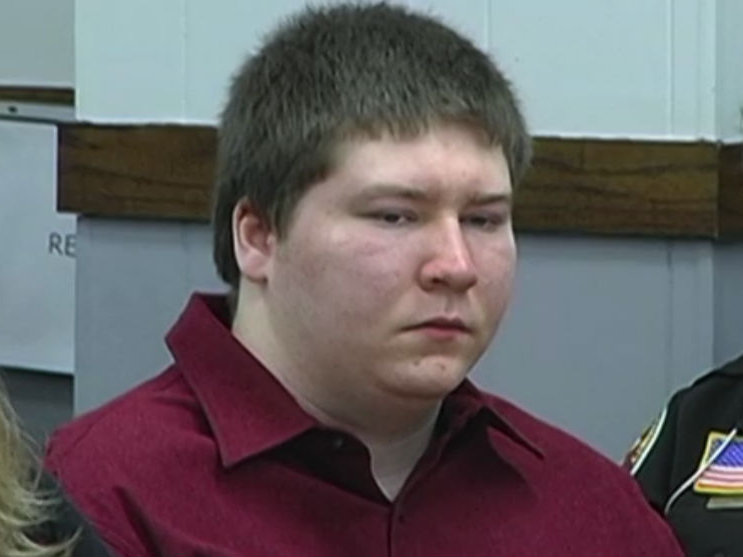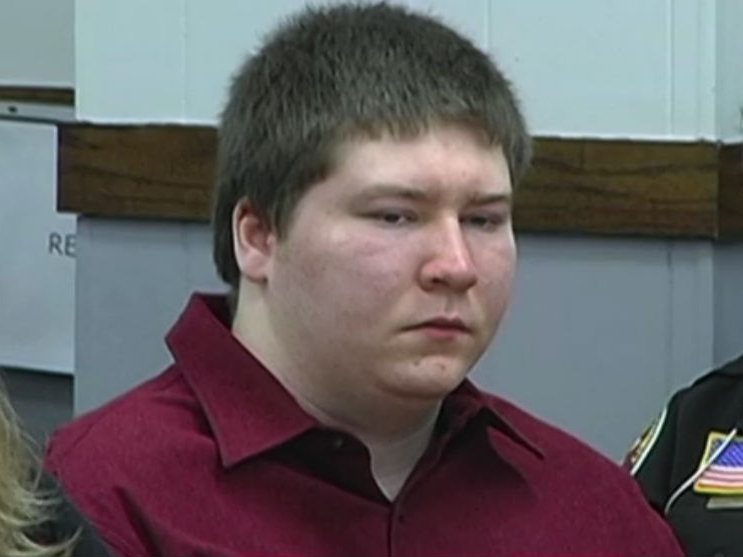There are key pieces of evidence that Netflix’s riveting docuseries "Making a Murderer" didn’t tell you about or skipped over. Of course, those things make Steven Avery look worse.
It’s been fascinating watching the national interest in the Steven Avery case blow up. The wildly heated social media commentary seems to be breaking down into warring narratives. I’ve lost count how many people have insisted Avery (and his nephew Brendan Dassey) are guilty because they watched news media coverage about the cases years ago (lots of us were guilty of that). I’ve also lost count of how many people now insist outright that they’re innocent because they watched a Netflix documentary. Perhaps one of the shining lessons here is to scrutinize everything.
I fall somewhere in between now. Before I watched the 10-part docuseries, I thought they were guilty (admittedly also from scattered news accounts and then DA Ken Kratz’s emotional and graphic press conference in which he outlined the Dassey "confession" details he never ended up using against Avery). At the time, the planting argument seemed ridiculous. The docuseries – built on a mountain of video and audio – altered my perceptions because it revealed new information I wasn’t aware of before.
I don’t know if Avery did or didn’t do it. I still think he might have. There’s serious evidence pointing in his direction. However, I also think the documentary raises many troubling questions that remain unanswered, including about the Manitowoc County Sheriff’s Department’s continuing involvement in the case.
I also think the new video and audio of the cognitively slow teenager Dassey was shocking, and he probably deserves a new trial. That doesn’t mean he didn’t do it. It means everyone deserves fair representation, and his earlier team seemed far from it. Furthermore, his confession was contradicted in ways by forensic evidence (why wasn’t Halbach’s blood found in Avery’s trailer or garage?), and there was no forensic evidence in the form of his DNA, blood or fingerprints tying Dassey himself to the crime.
All of that being said, I was curious what evidence the documentary – which was clearly told from a defense advocacy perspective – left out or glossed over. Everyone should be interested in the same thing here: the pursuit of truth and justice for Teresa Halbach. Perhaps if we piece together more of the puzzle, as was done in court and in the documentary in different ways, we will find that the picture gets clearer. I wish a news station would rerun the trial from gavel-to-gavel, frankly. That would be even better yet.
Then-DA Ken Kratz has been fighting back hard in People Magazine this week claiming the documentary omitted key evidence. I didn’t want to take his word for any of it, though (especially due to his later problems). Instead, I went back to news accounts and some court transcripts from the time. Those are not infallible, either, of course. But they are interesting. It’s too bad the Netflix documentarians left things out or quickly passed over things. They would have created an even richer tapestry if they hadn’t.
Earlier, I told you about the four alternative suspects the defense tried unsuccessfully to raise during the trial. Turns out there were a bunch of unsavory characters on the property that day or who had access to it.
Here are 14 other things that you also may not have heard yet:
1. Leg irons and handcuffs were found in Avery's residence and in Dassey's
The criminal complaint contended that authorities "located items of restraints within Steven Avery’s residence including hand cuffs and leg irons."
According to a lengthy Milwaukee Magazine story from May 1, 2006, Avery admitted they were his, stating of the handcuffs and leg irons, "I bought them. I wanted to try out something different with Jodi (his girlfriend)."
Of course, it’s also very curious that Halbach’s DNA didn’t turn up on these handcuffs and leg irons if they were used to restrain her.
Interestingly, according to the testimony of the Department of Justice investigator in Dassey’s trial, that’s not the only place such things were found. He testified that leg irons and handcuffs were found in both Avery’s and also Dassey’s mother’s residence, although on cross examination he stated that Brendan Dassey’s prints and DNA weren’t on them. In otherwords, it was not proven at all that these belonged to Dassey. But they were there, according to court transcripts.
2. Avery and his girlfriend had a less than rosy relationship at times
The Netflix documentary paints the romance of Jodi and Steven as a positive one. It may have been in some ways, but there were also some problems.
According to the Milwaukee magazine story, "In September 2004, sheriff deputies arrested Avery for violating a disorderly conduct ordinance after an altercation with (Jodi) Stachowski. The court ordered him to stay away from the woman for 72 hours and pay a fine of $243."
3. The car key unearthed in Avery's residence had DNA from his sweat on it, the prosecutor says
The documentary makes tangential reference about perspiration but not in a way that it’s focused on or made particularly memorable. Rather, the documentary seemed to focus more on just saying his DNA was on the Halbach car key and focusing on a theory that law enforcement planted Avery’s blood in Halbach’s car (which they deny).
From the Milwaukee magazine article, "A state analyst determined blood from the car and dried perspiration on the car key matched Steven Avery’s DNA." Kratz also detailed this contention in his opening statement in the Dassey trial, according to the transcript, saying the crime lab analyst recovered a full DNA profile of Avery from the sweat on this key. (update: the defense claims it was not proven that this was sweat or what is called "touch DNA").
The key, of course, is the key piece of evidence the defense claims law enforcement planted. There are very fishy things about the key. It was found by a Manitowoc law enforcement official days after others had already searched Avery’s residence repeatedly and had not found it – and Manitowoc had already publicly handed over the case because of Avery’s pending wrongful conviction lawsuit against that agency. This same officer was deposed shortly before the murder in Avery’s civil suit for his previous wrongful conviction. Very weird.
However, it’s harder to envision officers getting their hands on Avery’s sweat or skin cells for what is called touch DNA. When it came to evidence planting allegations, the documentary talked more about a vial of his blood maintained from the previous wrongful conviction case (also curious because it had a hole poked in the top of it, of course). The DNA evidence was more complex.
4. Dassey's mother said Dassey helped Avery clean his garage floor
The Milwaukee Magazine article further stated that, "On February 27, Dassey’s mother spoke with police investigators. Barbara Janda, 41, mentioned that her son had stained his pants while helping his uncle clean his garage floor around Halloween." Also, according to the Department of Justice investigator’s testimony in Dassey’s trial, Dassey’s pants had bleach stains that he said were from helping clean the garage, transcripts say.
5. Pornography was recovered in Avery's residence
The Wisconsin State Journal reported on Nov. 12, 2005 that officers recovered "pornographic material, according to the search warrants."
6. The previous animal cruelty case involved a bonfire
This animal abuse incident was mentioned in the documentary but not in great detail. According to an Associated Press story from Nov. 20, 2005, "Steven was convicted in 1981 of burglary. He got five years probation, which was revoked in 1982 after he was charged with animal cruelty for pouring gasoline on a cat and throwing it into a bonfire."
7. Avery had drawn a torture chamber while in prison and was violent to other women
According to an Appleton Post Crescent article from March 9, 2006, "While he was in prison, Steven Avery planned the torture and killing of a young woman, new documents released Wednesday indicate. The allegations are included in 22 pages of court documents accompanying additional charges filed by Calumet County Dist. Atty. Ken Kratz. ... Kratz also included in Wednesday's filings statements from prisoners who served time with Avery at Green Bay Correctional Institution. They said Avery talked about and showed them diagrams of a torture chamber he planned to build when he was released."
Furthermore, reported the newspaper, "The filings also include statements from a woman, now 41, who said she was raped by Avery, who told her ‘if she yelled or screamed there was going to be trouble.’ There also is an affidavit from a girl who said she was raped by Avery. ‘The victim's mother indicated that the victim does not want to speak about the sexual assault between her and Steven Avery because Steven Avery told her if she 'told anyone about their activities together he would kill her family,'" the filing said. According to the newspaper article, "The affidavit said Avery admitted to his fiancee that he had sexually assaulted the girl."
8. Avery once opened his door "just wearing a towel" when Halbach went to his property previously
There’s evidence for this one, but it was never allowed in trial. This was one of Kratz’ claims to People Magazine. According to People Magazine, "He cites Halbach's Oct. 10, 2005 visit to the property owned by Avery's family for a photo shoot for AutoTrader magazine: According to Kratz, Avery allegedly opened his door ‘just wearing a towel. She was creeped out [by him]. ... She [went to her employer and] said she would not go back because she was scared of him.’"
According to an Associated Press story from Feb. 14, 2007, the judge "would not allow Dawn Pliszka, an Auto Trader receptionist at the time, to testify about one of Halbach’s previous encounters with Avery," said the story, continuing:
"She had stated to me that he had come out in a towel," Pliszka said while the jury was outside of the courtroom. "I just said, 'Really?' and then she said, 'Yeah,' and laughed and said kinda 'Ew.'"
The AP article said the judge would not allow the testimony to be heard by the jury "because the date wasn’t clear and few details were known about the alleged encounter."
9. Avery called Auto Trader to specifically request Halbach the day she died
This is also contained in the same AP story. It said that the same woman, Pliszka, testified – this time before the jury – that Avery called her on Oct. 31, 2005 "to request the photographer who had been out to the property previously."
Angela Schuster, magazine operations supervisor, further testified that Halbach went to the Avery compound six times from June to Halloween to take pictures and also said, "She talked to Halbach by phone around 11 a.m. that day to tell her of the appointment at the Avery property," according to the AP.
10. Avery called Halbach's cell phone three times, twice using the Star-67 feature to hide his identity
According to a newspaper article in the River Falls Journal from Feb. 28, 2007, Luring Cellular company workers Bobbi Dohrwardt and Laura Schadrie testified that "Avery's cell phone made three calls to Halbach's cell, and he twice used the Star-67 feature that hid his identity." These calls came in about 2:30 p.m.
According to an Associated Press article from Feb. 28, 2007, "The third call was placed about two hours later." It "lasted 13 seconds," and the phone company worker "couldn't tell if it was answered or went into voice mail."
11. Avery gave a false name when he called Auto Trader
From the same AP story, "Prosecutors are trying to convince a jury that Avery lured Halbach to the family salvage yard by booking an appointment with the magazine, using the name of his sister Barb Janda, to take a picture of a red minivan that Janda wanted to sell."
Of course, this could be explained by the fact that it was his sister’s car that Halbach was to photograph.
12. The burnt bone fragments were mixed with steel tire belts
According to the criminal complaint, "Officers also located remnants of steel belts of tires that appear to have been utilized as fire accelerants."
A Nov. 15, 2005 Wisconsin State Journal article reported that, "Investigators also said in the court documents that they found steel belts of about six tires that were used as fire accelerants. They also found a number of 5-gallon buckets that appeared to have been used to distribute burned remains." Kratz told People Magazine the bone fragments "were 'intertwined' with the steel belts."
13. Avery's blood was found in six places in the Halbach vehicle, and DNA from his sweat was found on a hood latch, the prosecutor says
I found this in Kratz’ opening statement in the Dassey trial transcript. He told the jury that the Avery blood was found on the ignition of the vehicle, on a CD case and on seats. He also said that Avery had a cut on his finger. And he stated that the state crime lab analyst had found DNA from Avery’s sweat on the hood latch of the Halbach vehicle. He also stated that Dassey had said in his confession that Avery opened the car’s hood.
14. Avery's rifle matched the bullet with the Halbach DNA on it
This is also in the opening statement. It says that Dassey said the bullet in the garage came from a specific gun of Avery’s that hung on Avery’s wall and that forensic testing matched the bullet with the Halbach DNA to this specific gun. This bullet was found months later by a Manitowoc law enforcement officer after others missed it during repeated searches.
Jessica McBride spent a decade as an investigative, crime, and general assignment reporter for the Milwaukee Journal Sentinel and is a former City Hall reporter/current columnist for the Waukesha Freeman.
She is the recipient of national and state journalism awards in topics that include short feature writing, investigative journalism, spot news reporting, magazine writing, blogging, web journalism, column writing, and background/interpretive reporting. McBride, a senior journalism lecturer at the University of Wisconsin-Milwaukee, has taught journalism courses since 2000.
Her journalistic and opinion work has also appeared in broadcast, newspaper, magazine, and online formats, including Patch.com, Milwaukee Magazine, Wisconsin Public Radio, El Conquistador Latino newspaper, Investigation Discovery Channel, History Channel, WMCS 1290 AM, WTMJ 620 AM, and Wispolitics.com. She is the recipient of the 2008 UWM Alumni Foundation teaching excellence award for academic staff for her work in media diversity and innovative media formats and is the co-founder of Media Milwaukee.com, the UWM journalism department's award-winning online news site. McBride comes from a long-time Milwaukee journalism family. Her grandparents, Raymond and Marian McBride, were reporters for the Milwaukee Journal and Milwaukee Sentinel.
Her opinions reflect her own not the institution where she works.







